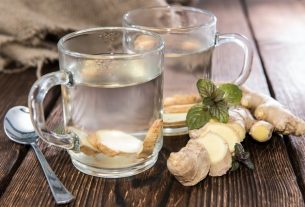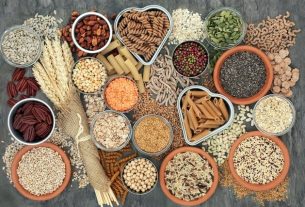Organic foods are those that are produced without the use of pesticides, hormones, chemical fertilizers, antibiotics, genetically modified organisms (GMOs) or other artificial compounds.
Organic foods help preserve the environment and biodiversity. Furthermore, organic foods appear to have higher levels of antioxidants and omega 3, and, therefore, could promote some health benefits, such as strengthening the immune system and helping to prevent the emergence of cardiovascular diseases and cancer.
Sold in open-air markets, supermarkets and health food stores, organic foods can be of plant origin, such as fruits, vegetables, legumes and whole grains, or of animal origin, such as beef, chicken, fish, milk, yogurt and eggs.

Main benefits
The main health benefits of organic foods are:
- Strengthen the immune system, because they have a high content of antioxidant and anti-inflammatory compounds, such as vitamin C, omega 3 and flavonoids;
- Help prevent the emergence of diseasessuch as cancer, cardiovascular diseases;
- Preserve the environment and biodiversity, because it reduces environmental and water pollution, and improves soil quality;
- Avoid poisoning, because it does not contain pesticides, chemicals that can cause symptoms such as vomiting, eye irritation, headache and dizziness. Learn more about pesticides.
However, more studies with human beings are still needed to confirm the possible health benefits of consuming organic foods.
It is important to remember that not all organic foods are healthy, as ultra-processed foods such as ice cream, cookies, cake and French fries can be obtained through organic farming, but contain a high level of sugar, salt or fat, for example.
How they are produced
Organic foods are produced using natural fertilizers, such as organic manure; with plant rotation techniques, to improve soil quality and avoid pests; and with natural pesticides, including solutions made with garlic, rue, pepper or neem, a plant with antifungal and antiparasitic action. Learn more about neem.
Furthermore, animals raised in the organic system must have access to the outdoors, consume organic food, be kept in places with more space and without stress, in addition to not receiving treatments with hormones or anabolic steroids.
Examples of organic foods
Some examples of foods that can be organic include those of plant and animal origin, such as fruits, cereals, vegetables, legumes, legumes, vegetable oils, milk, yogurt, cheeses, beef, fish, chicken and eggs.
Furthermore, some ultra-processed foods can also be obtained through organic farming, such as French fries, ice cream, pizza, hamburgers, cookies and cakes.
Difference between organic and GMO foods
Transgenic, or genetically modified, foods have parts of DNA from other living organisms mixed with their own DNA and aim to increase the resistance of foods against pests, insects and droughts, and facilitate the cultivation of food. Find out more about transgenic foods.
However, transgenic foods can increase the need for the use of pesticides, as many weeds become resistant, causing the need to apply greater quantities of this product to combat them.
Organic foods do not undergo genetic modification, maintaining the original characteristics of the food and no pesticides are used on the plantation. Thus, organic foods promote sustainable development, environmental preservation and biodiversity.
Possible disadvantages
The main disadvantage of organic foods is their high cost. This happens because the production of these foods generally requires manual practices to eliminate pests and weeds, and due to production losses that are caused by pests, diseases and weeds, for example.

Sign up for our newsletter and stay up to date with exclusive news
that can transform your routine!
Warning: Undefined array key "title" in /home/storelat/public_html/wp-content/plugins/link-whisper-premium/templates/frontend/related-posts.php on line 12
Warning: Undefined array key "title_tag" in /home/storelat/public_html/wp-content/plugins/link-whisper-premium/templates/frontend/related-posts.php on line 13



